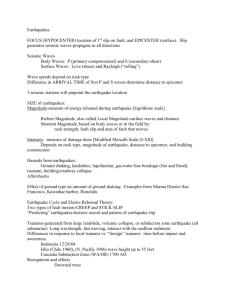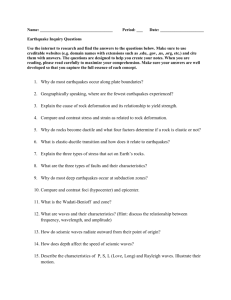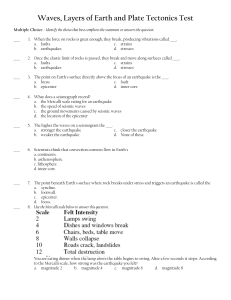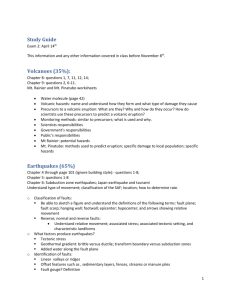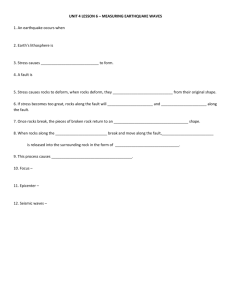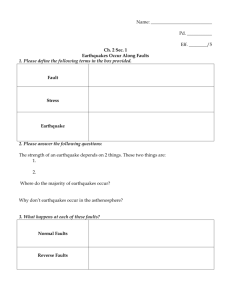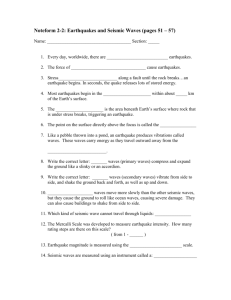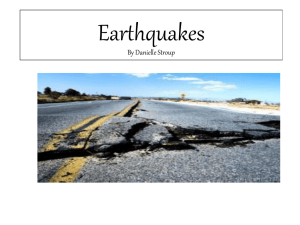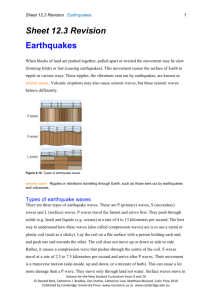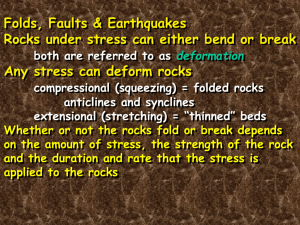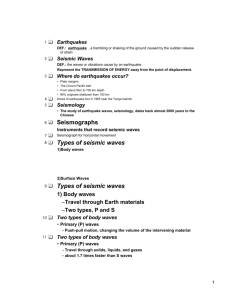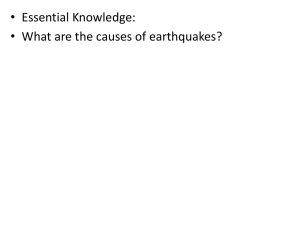What is an earthquake?
advertisement
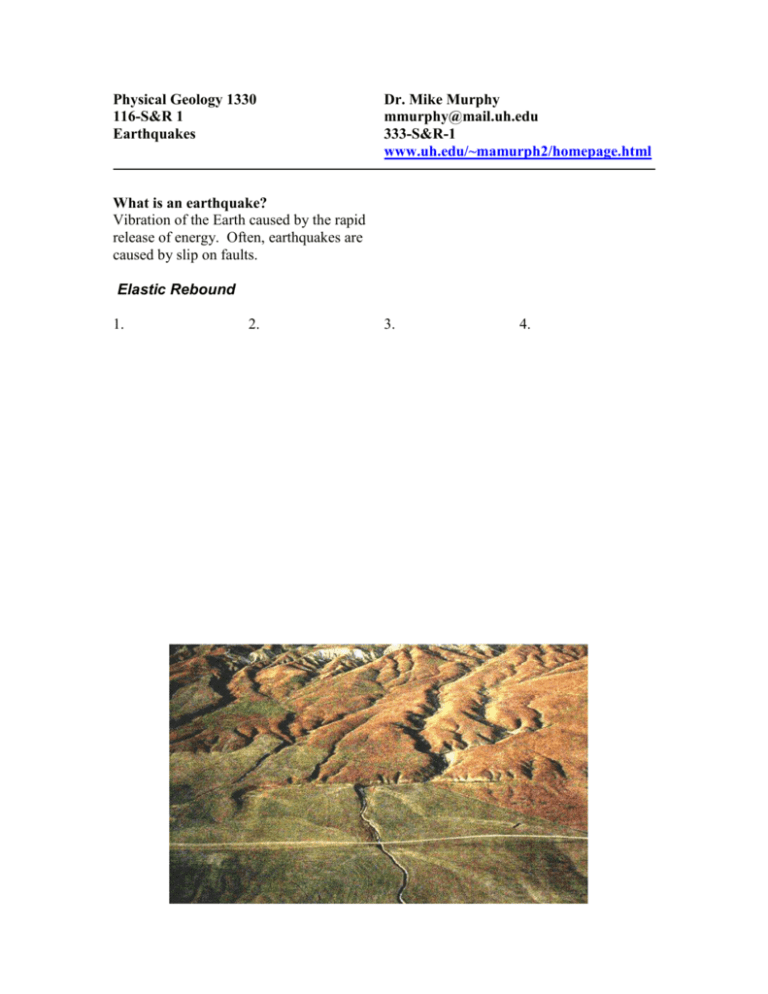
Physical Geology 1330 116-S&R 1 Earthquakes Dr. Mike Murphy mmurphy@mail.uh.edu 333-S&R-1 www.uh.edu/~mamurph2/homepage.html What is an earthquake? Vibration of the Earth caused by the rapid release of energy. Often, earthquakes are caused by slip on faults. Elastic Rebound 1. 2. 3. 4. Faults Move (Slip) in Two Ways: Fault Creep – slow gradual movement. Produces small earthquakes. Stick-Slip: Faults stay locked storing up elastic energy, then suddenly slip releasing the stored energy. Produces large earthquakes. Focus Epicenter – Fault Scarp – a feature resulting from displacement of the earth’s surface due to slip (motion) on fault. Seismographs – Components of a Seismograph – Body Waves – P waves S waves S Waves P Waves Speed Amplitude Period Medium Locating Earthquakes is based on the velocity difference between S waves and P waves. How many Seismographs do you need to locate an earthquakes epicenter? Modified Mercalli Intensity Scale – assesses the damage of an earthquake at a specific location. Intensity measures the damage of an earthquake – which in turn depends on: Richter magnitude scale – 1. Determines EQ magnitude from deflections on seismographs. 2. Uses a logarithmic scale to express magnitude. 3. Scale ranges from 0.1 to 9. 4. For each increase of 1 unit in magnitude, the Shaking (wave amplitude) increases by a factor of 10. 5. For each increase of 1 unit in magnitude, the Energy increases by a factor of 32. Magnitude vs. Amplitude vs. Energy Summary of Earthquake Hazards 1. 2. 3. 4. 5. Fault Rupture Ground Shaking Liquefaction of Sediment Landslides Tsunamis 6. Dam Failure 7. Fires In Class Video – “When the Bay Area Quakes”

